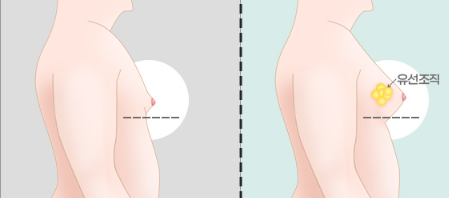Gynecomastia—a benign enlargement of male breast tissue—affects millions worldwide, and demand for corrective surgery keeps rising. The latest International Society of Aesthetic Plastic Surgery (ISAPS) survey counted 352,302 male‑breast‑reduction procedures in 2023, a record high that underscores just how common (and treatable) the condition has become.
Why Korean Clinics Lead the Conversation
South Korea sits near the top of the global aesthetic‑surgery league table, and its surgeons present new gynecomastia techniques every year. At PRS KOREA 2024, “Body Contouring and Gynecomastia” earned its own plenary slot, reflecting both national expertise and international interest. 2024.prskorea.org
But Korea’s appeal isn’t just academic. The country offers:
- Transparent pricing – recent market data put the typical surgical package between $2,800 and $6,460 USD (≈ ₩3.8 – 8.7 million), with an average around $4,900 USD.
- High procedural volume – busy surgeons refine their craft daily, which translates into lower revision rates.
- Travel convenience – Seoul’s Incheon hub welcomes visa‑free stays for many nationalities, and most clinics provide English‑speaking coordinators.
Do You Really Have Gynecomastia?
True gynecomastia stems from glandular proliferation, whereas pseudogynecomastia is simple fat. A large Korean CT review of 5,501 adult men found incidental glandular gynecomastia in 12.7 % of patients—proof that the condition often hides in plain sight.
Common triggers include puberty, anabolic‑steroid use, some antidepressants, liver disease, and normal aging. Whatever the cause, persistent gland tissue rarely shrinks on its own after 12 months; surgery remains the gold standard.
Surgical Playbook in Korean Centers
Most board‑certified plastic surgeons combine three steps:
- Power‑assisted or VASER liposuction to debulk fatty tissue.
- Direct gland excision through a 2‑ to 3‑centimeter peri‑areolar incision.
- High‑definition contouring with energy devices (e.g., BodyTite RF) to tighten skin and avoid dog‑ears.
Procedures last 60–90 minutes under twilight sedation or light general anesthesia, and patients usually walk out the same day wearing a compression vest.
Recovery Timeline
| Time‑point | What you’ll notice |
|---|---|
| Day 0–2 | Mild soreness, drainage strips removed. |
| Week 1 | Back to desk work; swelling peaks, then subsides. |
| Week 3–4 | Light gym sessions okay; bruises mostly gone. |
| Month 3 | Final contour visible; scar fades from pink to pale. |
Wearing the vest 24/7 for the first month and avoiding nicotine speeds collagen remodeling and keeps the new chest flat.
Cost Breakdown (Typical Seoul Package)
| Item | Low (USD) | High (USD) |
|---|---|---|
| Surgical fee | 2,000 | 5,000 |
| Facility + anesthesia | 600 | 1,000 |
| Compression garment & meds | 200 | 300 |
| Total | 2,800 | 6,460 |
Prices climb for severe or “Grade III” cases that demand skin excision or areola reduction.
Choosing the Right Surgeon
Look for these green flags:
- Korean Society of Plastic and Reconstructive Surgeons (KSPRS) membership.
- At least 50 gynecomastia cases per year—ask to see a photo portfolio.
- Clear policy on revision fees and scar‑management aftercare.
Recommended Resource
For a patient‑friendly roadmap—covering grading charts, before‑and‑after photos, and recovery FAQs—check the comprehensive guide at man.daprs.com/men/gynecomastia.php. It also explains how Korean surgeons decide between liposuction‑only, gland excision, or full chest lift.
Final Word
Gynecomastia can erode self‑confidence, but modern Korean techniques turn a decades‑old stigma into a 90‑minute, outpatient fix. Do your homework, review genuine before‑and‑afters, and use resources like man.daprs.com to arrive at your consultation informed. The payoff: a chest that lets you ditch the compression shirt for good.
